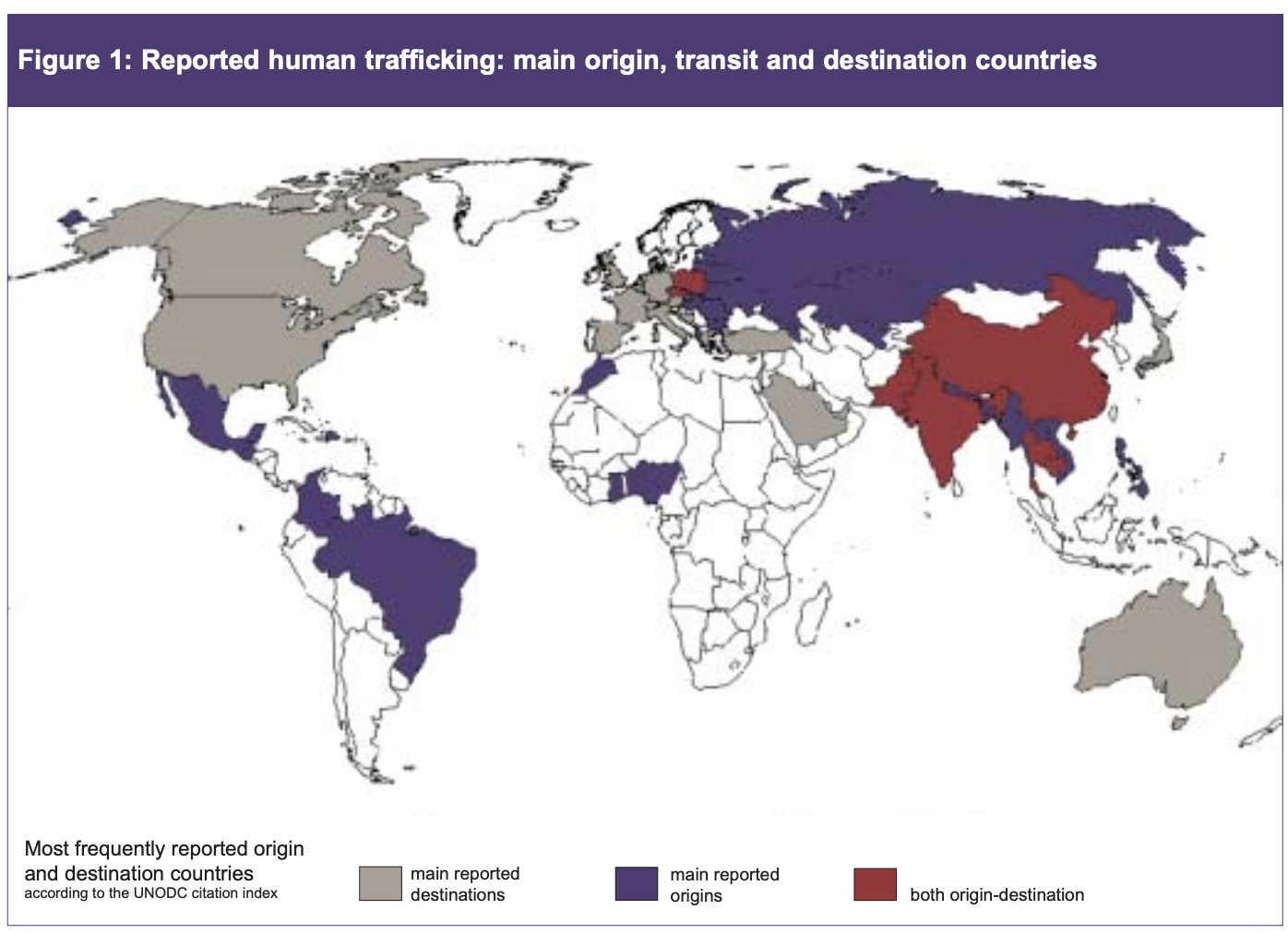How do countries contribute to human trafficking?
We know that human trafficking is a worldwide problem that involves nearly every country and every type of person. But it’s time to break that down further: Just how are countries involved in the human trafficking industry?
There are several different ways in which countries contribute to the trafficking market, and these methods are typically classified as: origin (source), transit, or destination countries.
Origin Countries - countries that supply trafficked persons
Origin countries are those that provide the supply of trafficked persons. This means that victims of trafficking are either trafficked in their home countries, or they are taken from their home countries and sent elsewhere to provide trafficking services. Origin countries tend to be those that are less developed, making it easier for traffickers to take advantage of individuals’ poverty and lack of education, as well as the country’s lack of social, political, and ultimately legal consequences.
It may be the case that parents sell their children for money, or even send their children to other countries with the belief that they will be given better opportunities. Check out the Netflix documentary, “The Traffickers,” episode 6, “Dark Side of Adoption,” for some Earth-shaking news about what often occurs behind the scenes when adopting from third-world countries. Perhaps adults themselves agree to travel abroad for the hope of a “better life” away from poverty, only to discover that they have been deceived and forced into horrible situations, in which they no longer have control over their lives or identities. Perhaps families are forced to make bricks in the very town they grew up in (another must-see is, “Kavi,” a short film directed by Gregg Helvey).
Whatever the case, poverty seems to bring forth corruption, because of the vulnerability of the community. As of now, Asia holds the largest number of victims being sent out to a wide range of destinations, and thus it stands as the largest region of origin.
Transit Countries - countries that create specific human trafficking routes
Photo Credit: http://www.stopvaw.org/trafficking_routes
Transit countries are those that make specific routes for victims of trafficking to pass through. They are the connecting line of point A and point B. Due to the convenience of their location between continents, many of the Pacific Islands are considered transit regions. This includes Hawaii, which deems human trafficking as its second-largest industry behind drug trading. Most victims transported through Hawaii come from Japan, the Philippines, and other eastern Asian countries. From there, victims are sent to America, Canada, or Australia.
Destination Countries - countries where human trafficking is in demand
Countries that have a greater demand for trafficking are considered destination countries. Destination countries tend to be more developed than origin countries. This is due to the fact that populations in developed areas have more resources available to them in order to to purchase the services of trafficked victims.
Europe is currently the largest region of destination within the trafficking industry. Oftentimes, victims see opportunity for a positive lifestyle for themselves and their families in destination countries. However, these individuals remain in their trafficking situations, because they have no way out, and even if they could manage to escape, they fear deportation or prosecution for trafficking offenses. These include: prostitution, illegal immigration, or drug smuggling. In many case, they fear returning to their home countries and being re-trafficked.
Of course, no country fits one, and only one, of these labels. While it is true that destination countries seem to be more developed, second- and third-world countries can also be destination countries. In those cases, victims are primarily coming from neighboring countries rather than from overseas. America is a huge origin and destination country. Asia, known for being the largest region of origin, also serves as a region of transit, with “underground” passages weaving through the jungles of countries such as Thailand, Myanmar, Bangladesh, and India.
There is another movement that contributes to the “success” of destination countries and human trafficking as a whole: sexual tourism.
Sexual tourism occurs when people travel the world to have sexual relations with prostitutes and trafficking victims. The reason for such travel is that different countries have different laws on trafficking, where some have legalized prostitution and others have turned a blind eye to it altogether. Below are the top thirteen countries that are known for explicitly eliciting sexual tourism:
Dominican Republic
Thailand
Costa Rica
Kenya
Japan
Amsterdam, Netherlands
Cambodia
Philippines
Indonesia
Spain
Brazil
Jamaica
Haiti
No one country is immune from the disease of human trafficking. It is relevant to all of us, and thus it is everyone’s responsibility to bring an end to it.
“But how?”
Know the national trafficking hotlines. Call whenever you are even only slightly skeptical about a situation. The more reports a case receives, the more leverage there is for law enforcement to intervene!
Learn to shop ethically. Steering away from fast fashion declares that you care about where your clothes come from and, more importantly, who is working to get them to you.
Say no to pornography. Too many of the women, children, and men exploited online are actually forced into sex trafficking against their will.
Work alongside nonprofits that have global connections (reading this blog means you are well on your way!).
Don’t be afraid to use your voice and speak up about the truth - you have power, and someone will listen. Your one free voice can advocate for someone else’s enslaved voice.
About the Author
Emily James is currently a junior at Azusa Pacific University, pursuing an English degree with a concentration in Writing. She has big plans to travel and see the vibrant colors of the world, and to write of the marginalized and unheard people she meets along her nomad journey (Dressember is fitting!). When she is not in class or working as an elementary reading and writing tutor, she loves to rock climb, hike, read, and watch romance movies with the girls.





